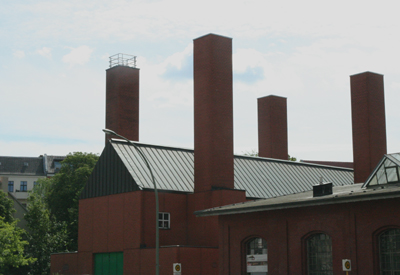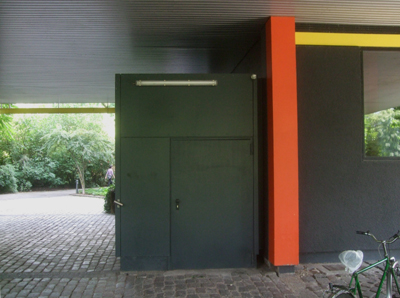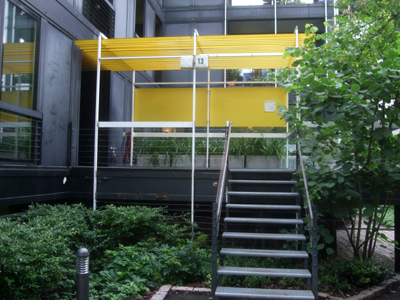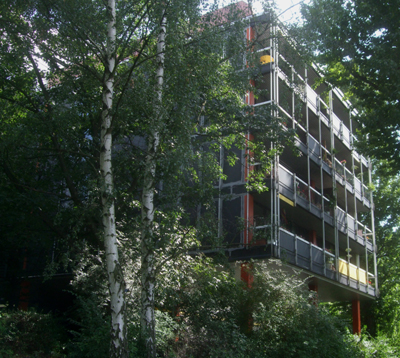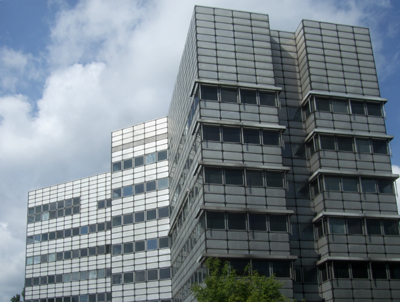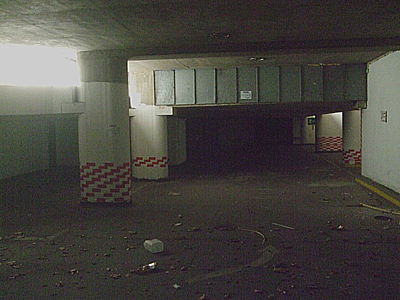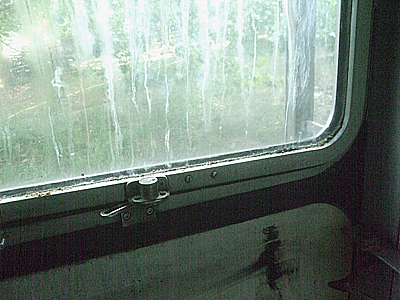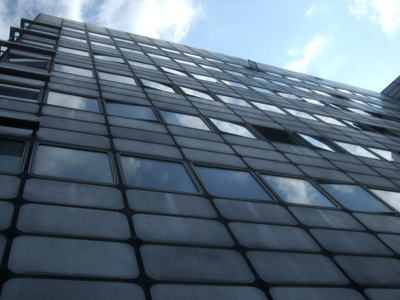excursion to the pumping station of Oswald Mathias Ungers
15th of July, 2011. 1:30 pm
The OMU pump station we'll visit at 2 pm.
Because the number of participants is restricted, we kindly as for an immediate response.
meeting point is on Alt-Moabit outside the pump station Tiergarten, Alt-Moabit 70 next to Gotzkowskystraße.
There are buses stopping right there: e.g. bus 245 from Zoo or Friedrichstraße/Nordbahnhof, or 106 from U Seestraße. The subway station Turmstraße (U9) is a ten minutes walk away on the same street.
After the visit we will have a lunch break in a jamaican soul food place very nearby.
Than we continue our walk and go to the Spree shore, to the experimental prefab steel house of Jochen Brandi and Partners (1974-77) at Schleswiger Ufer 6-8 and to the Evangelisches Konsortium by Georg Heinrichs and Hans Christian Müller, built in 1964-1970, in Backstraße 1-2 right next to it, their second Neopren house.
The tour ends in the Hansavierel, where there are several S- and U-Bahns and buses.
Oswald Mathias Ungers
Ungers, born in 1926, was probably the most influential German architect of the second half of the 20th century.
He was an influencial teacher at Cornell (Rem Koolhaas stopped his studies and went there because of him) and at the TU in Berlin, where he was one of the very very few in post-war Germany that worked on a contemporary and deep theoretical level. He went in a independent way from brutalism to rationalism to post-modern narrative, though by himself always called his architecture "humanist".
He built in the Märkisches Viertel in Berlin, at Lützwoplatz, and major works in Hamburg (Kunsthalle), Bremerhafen (Alfred-wegener-Institute), his own house in Cologne, Frankfurt fair, the Wallraf-Richartz-Museum.
Ungers invited the three years younger Leo to teach with him at TU in the 60ties. Both were invited by Aldo Rossi to contribute at the 1973 Milano Trienale of Architecture, where the movement of the rationalist was first shown to a bigger audience.
pump station Tiergarten
The pump station was built in 1987 by Ungers and Stefan Schroth. It replaced the old pump station next to it, built in 1887 to 1891 by Nehring, Richter, Friedrich Krause (whom was later, in 1914 to 1927, the technical planer of the Westhafen), and Krieger.
The building is from the high times of Postmodernism, Ungers probably made his most archetypical example here.
In the interior we can see that Ungers took inspiration for the pump station from Leo's Umströmtank der TU, the so called "pink elephant", built in 1975-76. We'll visit this on
the Thursday after.
The major part of the building lies underground, three stories deep.
The exterior refers to a classical and harmonious canon of early industrial buildings including its basiclical three nave typology, its brickstone and the long chimneys. It relates in proportion to the older pump station next to it.
Andreas Zergiebel of the Berliner Wasserbetriebe will be a great guide and tell us about the building, the collaboration with Ungers and technical issues.
More on
the other tours.
The Tour is a cooperation of Büro Schwimmer and
architectureinberlin




